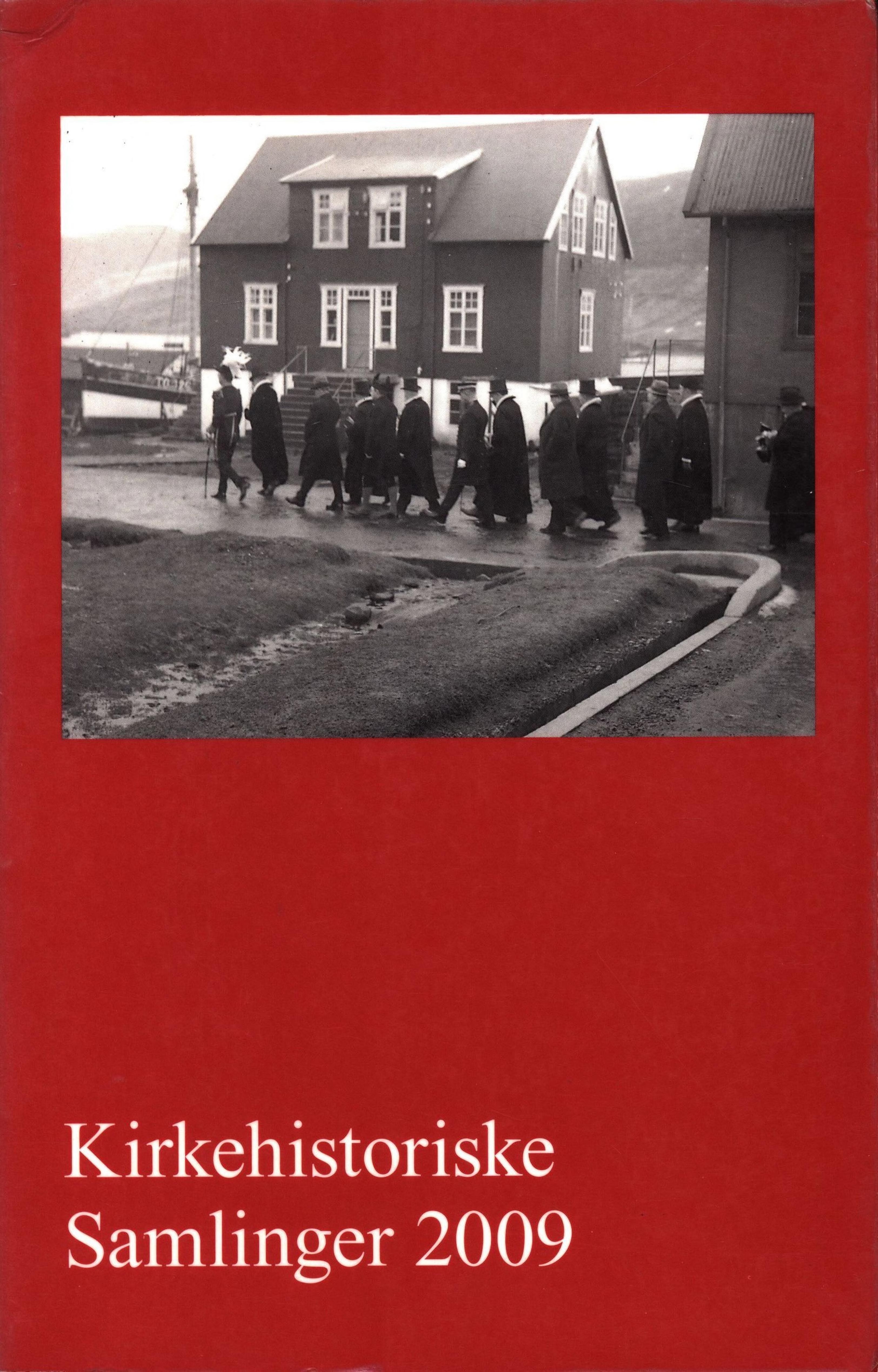Publiceret 25.02.2025
Citation/Eksport
Copyright (c) 2024 Tidsskriftet Kirkehistoriske Samlinger

Dette værk er under følgende licens Creative Commons Navngivelse – Ingen bearbejdelser (by-nd).
Resumé
During the later part of the 19th Century the Faeroe Islands changed from a rural society to a fishing nation. In the same period there was a rise of a national movement in which also some of the Faeroe Island pastors played their part. The language in church and school was Danish but with the new ecclesiastical legislation in the beginning of the 20th Century a possibility was given that sermons be delivered in the Faeroese language. The article focuses on the appointment of pastors on the Faeroe Islands in the period from 1854 to 1904 when the vestry acquired an influence concerning appointments of pastors. How were the relations between the Danish and the Faeroe Island’s conditions of employment, and how did the Ministry for Ecclesiastical Affairs and Public Education secure contact with the far away deanery, and how did the special natural environment influence the daily tasks ofthe pastors? Topics that are examined in the article are the question of qualifications needed for Faeroe Island pastors; were more Faeroe Islanders appointed than Danes - and why? What was done if a vacant office did not attract any applicants? For how long time did the pastors stay in their offices, and why did they move on? The main sources derive from the Archives of the Ministry for Ecclesiastical Affairs and Public Education in the National Archives in which all applications ofthe pastors are kept. Till 1913 the Faeroe Islands where a deanery with seven parishes but the number of parsonages actually was far higher. Each of the seven pastors had four to seven churches to attend, and transportation to them 52. P.M. Rasmussen: Denfærøske sprogrejsning, København 1987, s. 217-18. was difficult as the churches were either placed on different islands or the road to them went over steep mountains. The Faeroe Island pastors were appointed by the Ministry for Ecclesiastical Affairs and Public Education in Copenhagen in the same way as offices in Denmark proper. The number of applicants varied pretty much from decade to decade according to the number of candidates available from the Faculty of Theology of the University of Copenhagen. The maximum quantum of applicants was reached in the 1860es and in the period from 1888 to 1904, while it was very hard to attract applicants to the least attractive offices in the 1870es and 1880es. In the 1880es the offices at Sando (Sandoy) and Norderoerne (Nordoya) had to remain vacant for a longer period oftime. The salary ofthe pastors differed considerably as the salaries were composed ofseveral parts some of which were sensitive to changes in the conjunctures of the Faeroe Island society (tithe deriving form agriculture and fishing). Another factor that affected the salaries was the potential cost of pension of the
former pastor or his widow. At the appointment of pastors candidates with longer seniority were normally preferred to younger ones, and married candidates were preferred to unmarried. Good recommendations, especially from the Faeroe Island dean, did play a part. Furthermore the marks of the university exam had significance, as only candidates with the highest marks could apply for the best ofthe Faeroe Island offices. An important criterion was a certain familiarity with Faeroe Island matters. Native Faeroe Islanders among the applicants would be preferred (the families Hammershaimb, Djurhuus, and Evensen) - but also Danes born in the Faeroe Islands, or otherwise related to the islands had an advantage. The Faeroe Island pastors quickly acquired new offices. 60% ofthem moved on within the first seven years. Some got a better paid office on the Faeroe Islands, but most of them moved to Denmark. One of the reasons was the bad salaries, but primarily the very hard struggles of transportation meant that elderly pastors had to give up the offices on the Faeroe Islands. 74 % ofthe pastors on duty on the Faeroe Islands in the period 1854 to 1904 applied for and gained new offices in Denmark. This was the matter with pastors of Faeroese Islands as well as Danish background. The Faeroe Islands were placed under the Diocese of Zeeland, but as the bishop resided so far away, the office of the dean gained greater importance in the Faeroe Islands as in Denmark. The deans ofthe Faeroe Islands were appointed by the king, but at all five appointments of deans in 1854-1904 the former dean had considerable influence on the election of the one that was to succeed him. In all instances Faeroe Islanders or persons with experience from service on the Islands were elected and appointed. It was not quite easy to be a dean on the Faeroe
Islands. The dean should oversee all the pastors and churches that were placed on 17 islands - and still take care ofhis own local office. Four out of five deans who served in the mentioned period therefore applied for offices in Denmark as they grew older. The majority of the pastors who were appointed 1854-1904 were Danes because there were very few Faeroe Islanders among the applicants. It became a matter ofsome importance when the new ecclesiastical laws in the beginning ofthe 20th Century opened up the possibility that sermons in the Faroe Island churches could be given in the local language. Only one of the pastors, A.C. Evensen of Sando/Sandoy,
could and wanted to preach in the Faeroe Island tongue. However this was the beginning of the changing of the language of the church services in the course of only a few decades.

